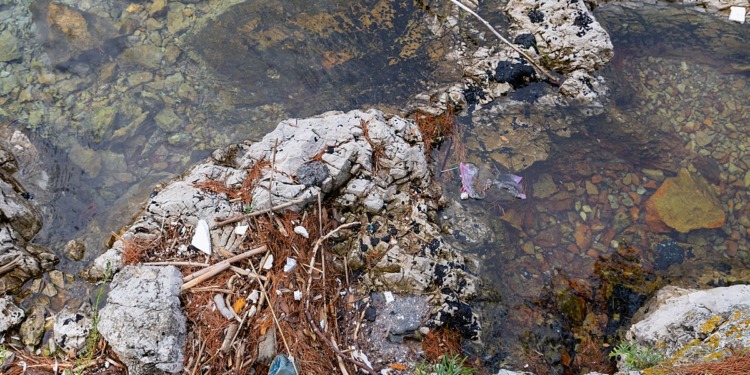The European Commission is once again tackling microplastic pollution. After the glitter ban was announced earlier this month, the EU has released further plans to “prevent microplastic pollution from the unintentional release of plastic pellets.”
The proposal aims to reduce pellet release by up to 74% by the end of the decade. Annually, up to 184 thousand tonnes of pellets are released into the environment.
Everyday products, such as chairs or water bottles, contain “nurdles” — durable plastic pellets. These pellets are added to the products, but due to mishandling, they might leak into the environment throughout the supply chain.
These pellets break down into microplastics that animals could eat, posing a threat to both animals and humans. The proposal aims to have clearer ecosystems, less plastic in rivers and oceans, and reduce potential risks for humans.
The Microplastics Proposal
The European Commission divided the proposal into four steps.
What can be found in the depths of ocean and the summit of Mount Everest, mostly invisible, yet present in our bloodstream?
Microplastics.
And plastic pellets are one of the largest sources of microplastic pollution.
Our proposal to combat them:https://t.co/VFMgDkY0vR pic.twitter.com/Y8VPP4G3VK
— European Commission in Cyprus (@EUCYPRUS) October 17, 2023
First, it urges operators to abide by certain best-handling practices already implemented by frontrunners. The specific practices will depend on the size of the installation or transport activity.
Secondly, the EU is set to introduce mandatory certificates and self-declarations to help national competent authorities verify standard compliance. For smaller companies, self-declarations will be sufficient, whereas larger companies must ask an independent third party to issue a conformity certificate.
Moreover, standardisation bodies will develop a harmonised methodology to help operators monitor their losses and tackle the remaining data gaps.
Related articles: Microplastics Found in Human Blood | How Much Plastic Are We Ingesting? | Microplastics Found in Clouds: What Now?
The Commission aims to increase accountability by tackling the companies’ awareness of the consequences of their practices on the environment and human health.
Finally, for fairness’ sake, lighter requirements will apply for small and medium-sized enterprises (SMEs), representing almost all the EU businesses — albeit not restricted to the pellet industry.
The EU’s Efforts to Cut Down Microplastic Pollution
Microplastics can have negative impacts on animals, people, and the planet. As stated above, they can enter the organism and cause major problems to people and animals, harming ecosystems and biodiversity.
Prevention is imperative because they are very mobile and hard to remove from nature. Dana Kühnel, from the Helmholtz-Centre for Environmental Research, stated that “preventing plastic release is much more effective than managing microplastics.”
It is not the first time the EU has addressed the problem of microplastics. The EU Plastic Strategy, the Circular Economy Action Plan, and the Zero Pollution Action Plan addressed the same problem.
Our new Zero Pollution Action Plan will fight air and noise pollution, improve water and soil quality, revive damaged natural ecosystems, tackle harmful chemicals & microplastics. Stopping pollution is the wisest choice we can make for a greener and cleaner Europe.#ZeroPollution pic.twitter.com/9Y0DcGx0mS
— European Commission in Cyprus (@EUCYPRUS) May 25, 2021
The EU’s approach is to reduce pollution caused by plastic producers and reduce both the intentional and unintentional use of added microplastics.
“The most important thing is to cut pollution at the source,” said Virginijus Sinkevičius, EU commissioner for the environment, oceans and fisheries, in an interview with the Guardian. “What we are looking to do is basically ensure we drastically cut, at the source, pollution of microplastics.”
Effectively tackling microplastics is imperative. According to a report by The Pew Charitable Trusts, a non-profit organisation that aims at “improving public policy, informing the public, and invigorating civic life,” microplastic pollution is set to double by 2040 if no action is taken.
Plastic raindrops?!
Japanese scientists have found #microplastics in the clouds, highlighting the urgent need for better regulations on microplastic emissions, such as the #Euro7 standards currently being discussed by @EUCouncil and @Europarl_EN. https://t.co/0ZXS2FZoKi
— The Pew Trusts (@pewtrusts) October 12, 2023
The Commission’s proposal will ensure that the industry best practices that already exist to limit microplastic pollution will no longer be voluntary.
“We now have the chance to hold industry accountable by making these mandatory – and effectively reduce the third-largest source of microplastic pollution in the EU,” said The Pew Charitable Trusts’ officer Siegfried Schmuck.
Editor’s Note: The opinions expressed here by the authors are their own, not those of Impakter.com — In the Featured Photo: Microplastics in Mljet National Park in Croatia, July 2019. Featured Photo Credit: Wikimedia Commons.








